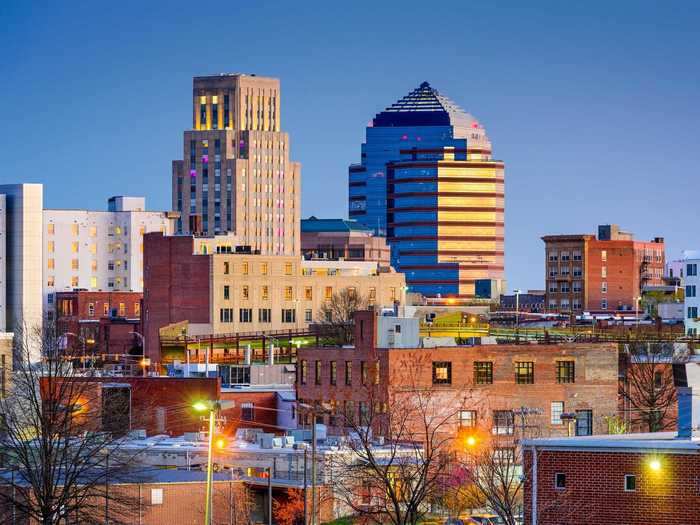
35.55% of jobs require a college or graduate degree in Denver, Colorado, which has a small dense population per square mile.Laser1987/Getty Images
Low-population-density cities with high educational attainment could bounce back first from the impact of the novel coronavirus pandemic, according to a study from Moody's Analytics.
Adam Kamins, senior regional economist at Moody's Analytics, analyzed which of the 100 largest US metro areas are likely to see the quickest economic recoveries after the outbreak subsides. His analysis shows that places that are less densely populated but also have a large share of jobs that require at least a college degree are likely to bounce back first, while more densely populated cities that have taken an economic hit from the coronavirus will likely take longer to recover.
Moody's Analytics used occupation data from the US Bureau of Labor Statistics to identify jobs where the minimum requirement is a college degree.
Kamins notes in his analysis that some of the places from his analysis were college towns, such as Durham, North Carolina, home of Duke University, and they could have a higher degree of educational attainment for that reason.
"Still, it makes sense that dynamic economies built around a major university...could enjoy a surge in growth in the years to come," Moody's Analytics told Business Insider.
The results also suggest metro areas in the Midwest and Southern region of the US that have jobs requiring high educational attainment and fewer people per square mile are likely to bounce back first.
Using data from Moody's Analytics, we ranked the 20 metro areas that have the largest share of jobs that require a college or graduate degree among cities that have 600 or fewer people per square mile.
Durham, North Carolina, was at the top of the list with, 40.37% of jobs requiring at least a college degree and a population density per square mile around 332. Moody's Analytics said Denver, which ranked No. 2 on our list, and Salt Lake City, which ranked No. 8 on our list are "well positioned to retake their crown as two of the fastest-rising metro areas in the US."
Read on to find out the 20 cities that are likely to quickly recover from the effects of the pandemic, according to Moody's Analytics:
Read the original article on Business Insider
Population density per square mile: 332.07

Population density per square mile: 355.53

Population density per square mile: 200.91

Population density per square mile: 313.13

Population density per square mile: 527.76

Population density per square mile: 277.88

Population density per square mile: 478.58

Population density per square mile: 160.43

Population density per square mile: 327.48

Population density per square mile: 464.00

Population density per square mile: 592.66

Population density per square mile: 287.50

Population density per square mile: 229.60

Population density per square mile: 442.46

Population density per square mile: 372.91

Population density per square mile: 114.00

Population density per square mile: 120.14

Population density per square mile: 438.82

Population density per square mile: 297.42

Population density per square mile: 271.96
 US buys 81 Soviet-era combat aircraft from Russia's ally costing on average less than $20,000 each, report says
US buys 81 Soviet-era combat aircraft from Russia's ally costing on average less than $20,000 each, report says 2 states where home prices are falling because there are too many houses and not enough buyers
2 states where home prices are falling because there are too many houses and not enough buyers A couple accidentally shipped their cat in an Amazon return package. It arrived safely 6 days later, hundreds of miles away.
A couple accidentally shipped their cat in an Amazon return package. It arrived safely 6 days later, hundreds of miles away. Foreign tourist arrivals in India will cross pre-pandemic level in 2024
Foreign tourist arrivals in India will cross pre-pandemic level in 2024
 Upcoming smartphones launching in India in May 2024
Upcoming smartphones launching in India in May 2024
 Markets rebound in early trade amid global rally, buying in ICICI Bank and Reliance
Markets rebound in early trade amid global rally, buying in ICICI Bank and Reliance

Copyright © 2024. Times Internet Limited. All rights reserved.For reprint rights. Times Syndication Service.